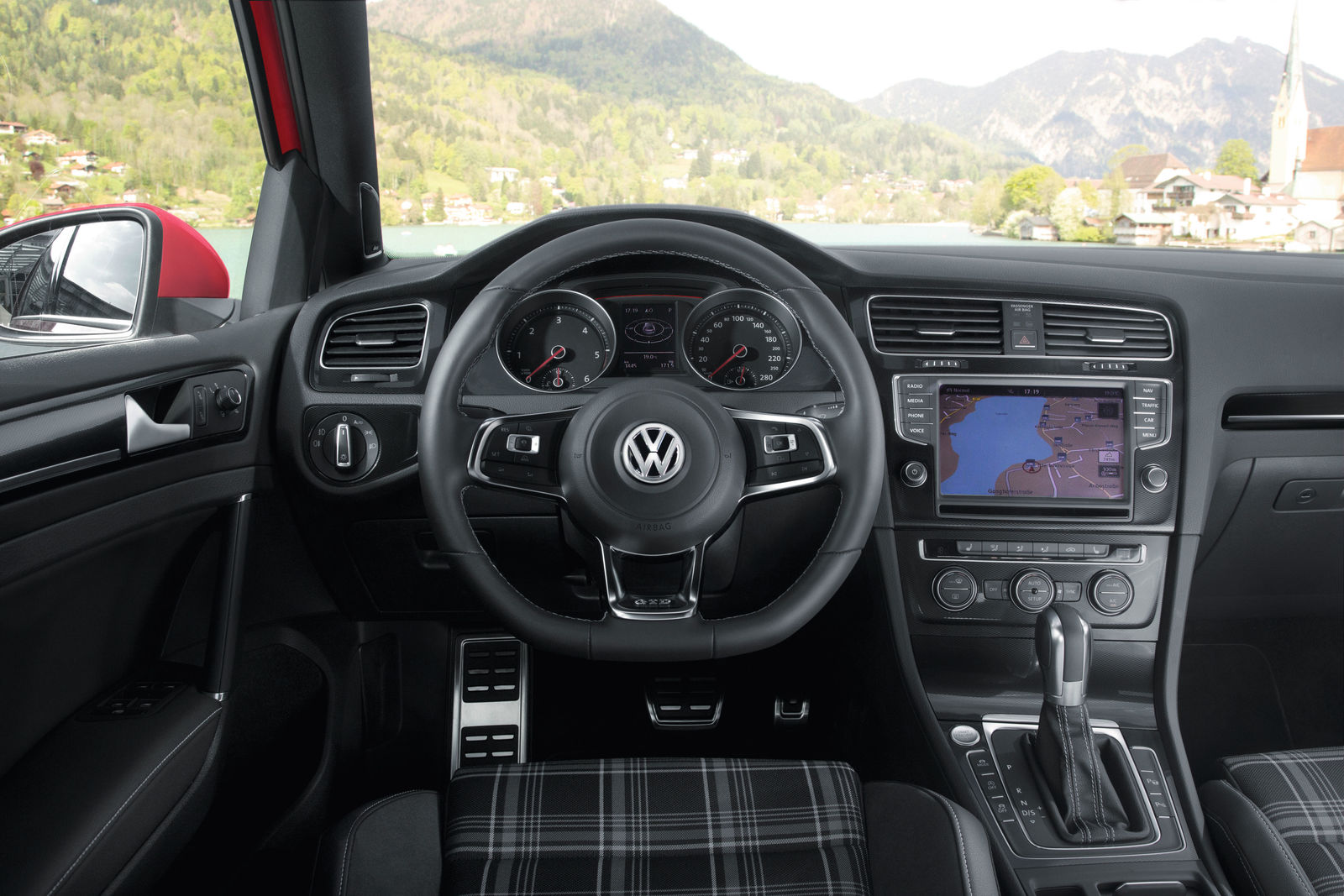Possibly one of the most important properties of the new Golf GTD – related to the interior – is the fact that once again this generation fits – as though cast to be ergonomic. The driver simply opens the door, sits down on the standard sport seat, adjusts it, adjusts the height and length of the sport steering wheel, buckles up, starts the engine, puts the hand on the gear shift lever in golf ball design (for a manual gearbox) and drives off.
Ergonomics benefit from MQB. Significantly more room and even better ergonomics define the GTD driver's area. Taller drivers in particular will welcome the seat position that has been shifted back by 20 mm; the steering wheel's adjustment range has also been modified. Pedal distances have been optimised as well thanks to the modular transverse matrix; the space between the brake and accelerator pedals, for example, has increased by 16 mm. Another ergonomic improvement: compared to the previous model, Volkswagen has raised the position of the gearbox controls by 20 mm; the gear shift grip now rests better in the driver's hand.
Legendary tartan covers in combination with Alcantara. The first GTI had it and naturally so did the first GTD – the legendary tartan pattern. The fabric in the previous model, known as "Jacky" has been redesigned and is now called "Clark". Naturally, the tartan pattern was retained. The top sport seats offer exceptionally good ergonomic properties. In addition, the front seats have height adjustment and a manually adjustable lumbar support. Light grey decorative seams provide a sporty contrast; the black roofliner that is always part of the GTD emphasises the sporty layout of the interior.
It is also quite clear that the standard leather multifunction sport steering wheel with contrasting seams was upgraded, as was the gear shift gaiter. Accents on the dashboard are in "Checkered Black" and the same applies to the decorative inlays in the door trim panels and on the centre console. Also making a strong statement is the instrument cluster with a colour display and independent instrument graphics. The specific look of the interior is rounded out by ambience lighting, special trim strips and panels (trim strips in the front doors with ambience lighting), brushed stainless steel pedals and foot rest (on left), door sill entry plates in front with a stainless steel application and ambience lighting that is also integrated here.
Quality and image overcome class boundaries. It is the entirely new fundamental concept for the interior design of the seventh generation Golf that represents a breakthrough for the sporty and high-end interior architecture of the GTD: especially noticeable is the wide centre console that is oriented towards the driver; it is more characteristic of the premium class than the compact class. In the middle of the centre console, beneath the switch for the hazard warning lights, is the five- to eight-inch infotainment touchscreen with its menu keys and dials. For the first time, Volkswagen is using a touchscreen generation here (as an option) that features proximity sensors and functionality that reacts to wiping movements of the fingers (wipe and zoom gestures as with a smartphone).
Located beneath the infotainment module are the well laid-out controls for the dual-zone automatic climate control system (Climatronic) that is standard in the GTD. This is followed by the lower section of the centre console that runs in a line up to the large centre armrest. To the right of the driver are the buttons for the new electronic parking brake and its Auto Hold function. Next to it, there is a closing storage compartment with integrated multimedia interfaces (AUX-IN, USB and optional Apple); the compartment is large enough to hold a smartphone.
There is a wide storage compartment hidden under the centre armrest that can be adjusted by up to 100 mm in length and five stages in height. This compartment is also of a good size. A new feature here in conjunction with the "Comfort" mobile phone interface is an inductive external antenna interface. The smartphone is placed in a universal holder in the stowage bin where the phone's antenna is inductively "coupled" and connected to the vehicle's external aerial. Sophisticated: the decorative inlays of the GTD door trim panels exhibit, as mentioned, a light seam as part of the standard ambience lighting system.
More space over its length. Despite all of its dynamic aspects, the Golf GTD is more than just a sports car; it is an all-round talent. This would make it a good choice as a business car for any day of the year. Background: larger body dimensions in overall length and width, a larger wheelbase, optimised track widths and MQB-modified package all have a positive effect on comfort. The GTD interior is now 14 mm longer (1,750 mm), for example. In the rear seating area of the optional four-door Golf GTD, passengers enjoy 15 mm more leg room. In front, shoulder room has increased by 31 mm to 1,420 mm, and elbow room has now gone up by 22 mm to a width of 1,469 mm. In the rear seating area, shoulder room was also improved by an additional 31 mm and elbow width by 20 mm.
In addition, the rear seat bench folds and has a 60:40 split. When folded, a nearly level cargo floor is created with a length of 1,558 mm. The Golf GTD can also be equipped with a cargo opening at the middle of the rear backrest. The successfully implemented space concept of the new Golf exhibits many other improvements as well. Cargo capacity, for example, has grown by 30 litres to 380 litres; the variable cargo floor can also be lowered by 100 mm.
